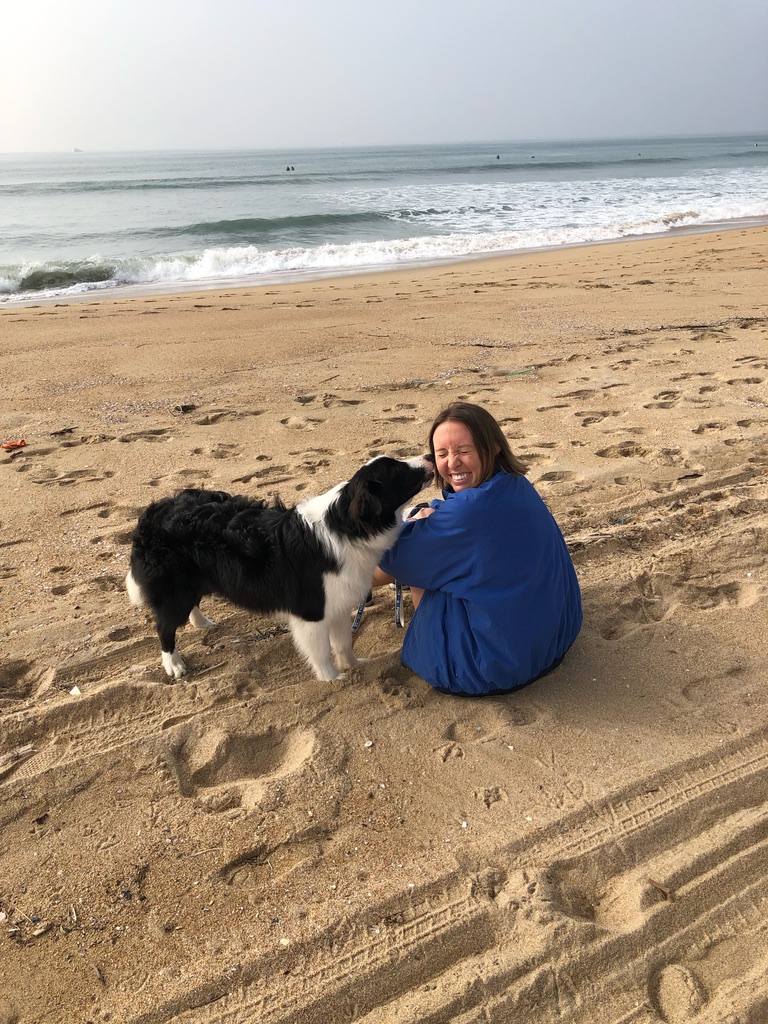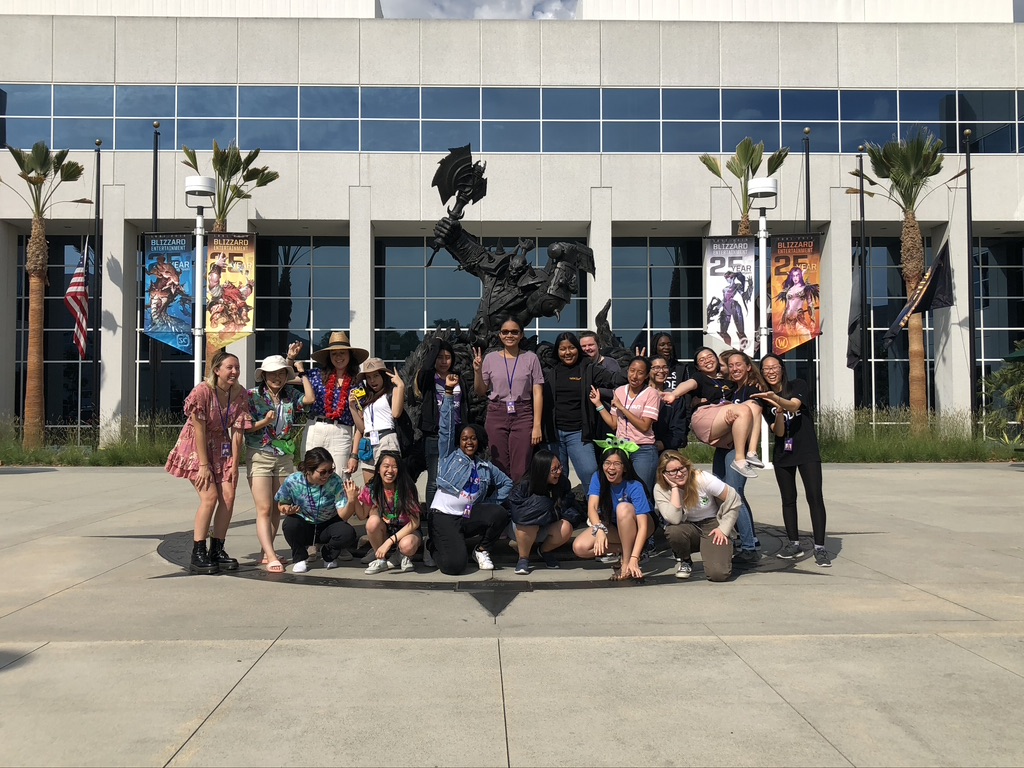I’m often asked by my students how I wound up in grad school, and especially why I chose to come to academia when I had a prestigious, 6-figure job in tech right out of undergrad. Sometimes even my fellow grad students will ask me this question after I declare my goal is to one day become a professor—why not just go to industry where I’ll make way more money doing “the same” work?
I was inspired to write about this because I’ve been listening to this wonderful podcast that I discovered recently (thanks in part to our reptilian algorithm overlords) called ADHD reWired with Eric Tivers. I’ve been listening to episode after episode of brilliant, successful, and happy individuals with ADHD talk about their life story and rise to success. Oftentimes though, these folks had to go through really dark periods in their lives before they were able to learn to “ride the dragon” of the brain that is ADHD.
When I applied for the NSF GRFP earlier this month, the personal statement I wrote for it required me to do some deep thinking about why I really was in academia, and why I wanted to pursue a PhD. A big part of my essay that I worked on was talking about how I re-found myself and my true interests while I was backpacking along the John Muir Trail. This really did happen, and honestly it kind of sounds like a movie—I had recurring dreams nearly nightly on the month-long trip about my love of science and teaching, and that my years of self-doubt in the field of computer science had made me forget my true, original dream to one day become a college professor. (I plan on posting my essay later if I get the fellowship, fingers crossed!) What that story didn’t cover, however, is why was I really was even on the JMT in the first place? This isn’t something you do on a weekend, most people can’t walk the trail while having full-time employment—it takes about 20-30 days for a backpacker to walk the 211 miles it spans.
After listening to the stories in the podcast, I realized there was more to my own “origin story” than I’d initially talked about. A big goal in my writing is to broaden access in the field, and I’ve had some recent realizations about how many of my struggles to fit in in Computer Science were not solely due to the fact that I am a queer woman in a predominantly cis-masculine hetero-normal field, but also because of the unique set of challenges that having an ADHD brain presents itself with.
There’s so much to this story that I want to cover, and I probably will be doing more posts about this. But for now, the story that answers: why did I leave industry and end up in academia?
For prior context, in many software engineering teams, work is broken into what is called in Agile Methodology “sprints.” Engineers are assigned a certain number of small tasks to be completed during this time period, typically about a two week long period. The amount of tasks they get assigned is dependent upon level of familiarity with the system and often seniority.
So, a UC San Diego recent graduate, assigned a couple easy bugs a sprint and being paid an astronomically high salary at a resume-making tech company—its the dream gig, right? For many of my fellow 22-year old peers who’d also scored a highly competitive, six-figure job right out of college, this was an easy-coasting ride on the gravy train. I saw friends in my cohort who absolutely crushed this game, I saw several rise to the coveted rank of senior and even staff level positions in under a year.
So what was Brooke doing during a typical sprint, 6 months into her tenure?
Hunched over in my dimly-lit corner cubicle, this particular sprint, I was hard at work. Not exactly doing any bug fixes, or new feature requests, or really any programming at all. No, a task much more important than this had me absolutely fixated. I spent an entire two week period—the length of the an entire agile “sprint” in that company—researching the best dog food for my new puppy Henry. During our team’s morning stand-up meetings, I literally would report imaginary roadblocks I was facing to justify why this task that was supposed to take a few hours was now taking the entire sprint: “Yeah, we gotta loop Mark down in IT on this one, this issue is looking a lot more complicated than we initially budgeted for.” But really, “Mark in IT” was the author of a book on naturopathic dog food. I would scuffle back to my desk, anytime a senior teammate walked by I’d pull up the code I hadn’t touched since it was assigned weeks ago, and go back to spending the entire day researching dog food. I did not get my work done at the end of the sprint, but I was now an expert on DIY raw natural dog food. Even after all this, Henry actually wouldn’t be any better off either, I realized because of the time involved in implementing all the “best” methodologies (I could barely clean up my own plates after dinner, how the hell was I going to do it for a dog), this would be totally unrealistic to even attempt. Henry just eats kibble now.

This cycle went on for nearly a year. Nine and a half days of dicking around at my desk, then the last half-day of the sprint when the literal fear of god and unemployment were in my veins that I would be able to have the energy to start on my tasks. And unsurprisingly, as probably any working software engineer can attest, tasks are almost always significantly more complicated and time-consuming than originally estimated, and often I’d have nothing completed at the end of a sprint.
“What the fuck was wrong with me?” I would think on a daily basis. I didn’t like lying to my team, hell I didn’t even really intend to in the first place. I knew this task wasn’t supposed to take me very long. But I just could not get myself interested in what I was “supposed” to be doing. Often unconsciously, I would get sucked in to whatever interested me at the time—one moment it might be dog food, other times it might be ultralight backpacking gear. It was really only when the assigned work intrinsically interested me where I was able to actually produce work that matched my capabilities. After a few good weeks, inevitably, I’d get sucked into something tangentially related to the project, such as researching the best possible testing framework, learning the theoretical underpinnings of cybersecurity despite being irrelevant for the looming project milestones. Those “little” but ever-important tasks would catch up to me, and I’d have nothing to show for it.
I felt dishonest, like I was letting both my team and myself down. No matter how “simple” the task appeared, the endless monotony of working in a large, risk-averse, decades-old legacy system was slowly killing me. Despite the brilliant marketing that tech companies have produced to make software engineering seem fast-paced, cutting-edge, and dare I say sexy, I found myself slowly drowning in a sea of self-hate and office mundanity. Why the fuck is it so hard for me to just fix a simple bug? Why can’t I just be a functional adult?
In my efforts to force myself to fit that neurotypical mold was when things became dangerous for me. As the months carried on, little was able to capture my attention at all. Towards the end of my brief tenure at this company, I had to have my mother drive me to work because I would sob the entire way there. At lunch, I’d go off-campus somewhere and sob. On the last day in the office, I felt like I had physically left my body. An empty shell of my former joyful, jovial self, the only thing that could capture my focus now were things that could harm myself, like maybe that plastic butter knife in the break room…
Hearing myself think that, I left work, and went immediately to my doctor, who put me on a medical leave of absence. It took me about a year and a half after that dark, gray day to find what I really wanted to do. For a while, that was nothing. I was able to use the funds I’d saved from working that job to take time off to backpack. While I had no trouble with my resume getting interviews from more tech companies (I got flown up to Google during this period), the only job that remotely interested me was a summer teaching job I eventually I stumbled upon for Girls Who Code. By that time I’d committed to doing the John Muir Trail that August, so a seasonal gig was an accidental perfect fit for me at the time.

In my dreams at night along the trail, I recalled the joy I experienced teaching those girls that summer. I didn’t have very good grades in college because of my undiagnosed ADHD—the last-minute cramming that’d gotten me A’s in high school didn’t work for me anymore with college-level programming assignments. I usually got Bs and Cs in my Computer Science classes, and so I never thought I’d be “good enough” to get into graduate school, a pre-requisite for teaching at the college level. My dreams along the JMT transported me to a time long before I thought I was inadqeuate to become a professor.
I’m still discovering so much more about my own mind. I’ve also learned that women are generally underdiagnosed with ADHD because we tend to internalize the symptoms rather than realize we may need to seek professional help (Jessica from How to ADHD has a great video on this phenomenon). Sometimes, its not just a toxic internal dialogue but also an external one, I believe that being a queer woman in Computer Science just exacterbated these feelings of isolation and unworthiness.
I’ve discovered, as I did on the JMT, that being a teacher is an integral part of my identity. I love the joyful process of scientific investigation and I love learning. I love the creativity and freedom that crafting my own research agenda and experiments affords. I love the diversity of the kinds of work I get to do in a day—I can tutor students, craft engaging lectures, create my own software framework from the ground-up to conduct my neural networks experiments, travel the world to present my research findings, ponder whether silicon will ever acquire consciousness. It might not sound like a huge difference to my neurotypical peers, but even just having the ability to truly, deeply focus on work that interests me without having to be interrupted by the thousands of little-deaths of Slack notifications, emails, “brief” meetings that take twice as long to “unwind” from and regain focus again—this is also part of the freedom that I love being in academia. The only “boss” I have to explain my working habits to really is the scorecard at the end of the year, wherein my objective output in terms of research or teaching productivity is measured. Not whether I punched in on-time every morning at 9 and clocked out at 6. I don’t have to explain to anyone that talking a 2 hour walk in the park in the middle of the day to stare at the geese is a crucial part of my daily routine—of course depending on what day it is, and perhaps whether listening to a podcast about UFOs or reading a book about the mysterious origins of eels might be more fun that day. The greater salary potential in industry is nothing compared to this.
As Eric Tivers of ADHD reWired put it so aptly, ADHDers don’t have the luxury of doing work that is uninteresting to them. We have to find work that interests us in order to survive.
I’m still learning so much about myself and what “it” is that I truly want to do in this life. I’ve learned I cannot tame the dragon that is ADHD, but I’ve learned I can ride it to where my interests take me. Right now, they’ve taken me to academia, studying neural networks and pondering the nature of consciousness, while teaching Software Engineering courses at UCI through my TAship I’ve been so lucky to acquire. I’ve had a lifelong love of teaching, I know I will continue to be guided there. I love learning, science, discovery, and helping others along the way. From my point of view right now on my “dragon”, a professorship is faintly outlined on the horizon, before that, the mountains of a PhD. And the only compass that I have is not that where the money lies, or where the security is, or where the most prestige lies, but where the beautiful beast of my interests take me. It is the only compass I need, and it is why I was led to where I am in grad school right now.
Further Resources
If you read this and related to many of the symptoms discussed, please connect with a psychiatrist and get the help you deserve. Many people with ADHD are not diagnosed until later in life, particularly for women. Receiving the proper treatment can be life-changing, and I highly reccommend you seek professional help if you believe you may also have this.
If you are also a college student who already has an ADHD diagnosis, this podast from ADHD reWired has some really helpful resources about self-advocacy and accommodations.
Finally, if you are experiencing similar symptoms of depression or suicidal thoughts like I discussed in this post, please seek help! Even if you do not have health insurance, many therapists offer sliding-scale for low-income patients. If you are a college or graduate student, many universities provide mental health services that are included in the cost of tuition. In last resort scenarios, the Suicide Prevention Hotline can help you if you are in an emergency situation, and can also be reached at 1-800-273-8255.
Future Posts
If you enjoyed this post, please let me know in the forum or reactions below!
In a future post, I’d love to talk more about my personal journey of accepting my ADHD, as well as strategies I’ve used to help me in school and get good grades. If these ideas interest you, or if you have another idea for a post topic, please comment and let me know!
